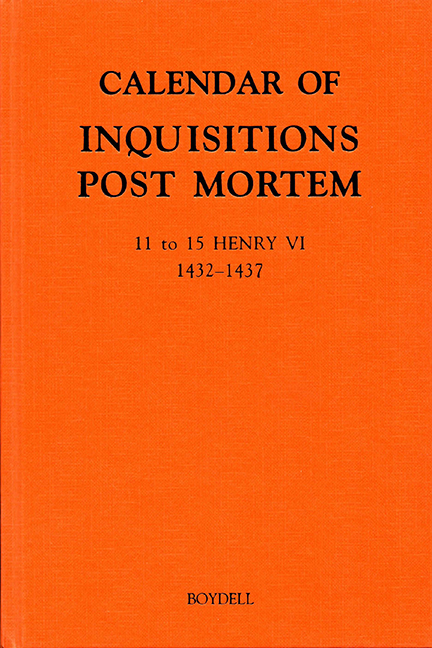Book contents
- Frontmatter
- Contents
- Acknowledgements
- Editorial Introduction
- List of Abbreviations
- Table of References
- Table of Escheators
- Calendar
- Thomas Ilketeshale, Knight
- John Wyntereshull, Esquire
- John Lawrence
- Maud Who was Wife of John Keuermond
- Index of Jurors’ Names
- Index of Personal Names
- Index of Place-Names
- Index of Subjects
- APPENDIX 1
Editorial Introduction
Published online by Cambridge University Press: 26 May 2017
- Frontmatter
- Contents
- Acknowledgements
- Editorial Introduction
- List of Abbreviations
- Table of References
- Table of Escheators
- Calendar
- Thomas Ilketeshale, Knight
- John Wyntereshull, Esquire
- John Lawrence
- Maud Who was Wife of John Keuermond
- Index of Jurors’ Names
- Index of Personal Names
- Index of Place-Names
- Index of Subjects
- APPENDIX 1
Summary
The manuscripts
Several classes of document at The National Archives (Public Record Office) were consulted in the compilation of this calendar. The core text is derived from the Chancery series of inquisitions post mortem (IPMs) – this is the C 139 series which covers the reign of Henry VI. These documents were generated by order of the Chancery to the escheator. They are not, however, the only ones that the escheator compiled in the course of this type of work. The escheator was also an officer of the Exchequer and, as such, copies of IPMs returned to Chancery were also returned to the Exchequer to facilitate the audit of the escheator's accounts. Moreover, the escheator might also take IPMs on his own authority as an official of the Exchequer – inquisitions taken virtute officii – and these were returned only to Exchequer. Chancery acquired inquisitions taken virtute officii by the writ calendared in this volume as ‘Writ (Exchequer’) (see 28, 263, for example).
Where, therefore, the Chancery material is deficient in some way – perhaps too galled or worn to be legible – it is supplemented by the various Exchequer series that contain copies of the C 139 IPMs. The E 149 series consists of the workaday Exchequer copies – many of these are annotated – while the E 152 series contains what seems to be a more formal enrolment of inquisitions at the Exchequer. These two classes of document have been consulted in a systematic fashion in order to find all IPMs relating to the regnal years 11–15 Henry VI. Duplicate Exchequer IPMs are cited in the manuscript references within the text of the calendar only when supplementary information has been taken from them: the Exchequer references can otherwise be found in the Table of References.
The Exchequer, as well as furnishing copies of the C 139 IPMs, also provides IPMs for which no C 139 version exists. This may be because the Chancery copy is now missing, or because the inquisition was originally taken by the escheator virtute officii with no obligation to return the IPM to Chancery. Again, the Table of References should be consulted to locate these stand-alone IPMs.
- Type
- Chapter
- Information
- Publisher: Boydell & BrewerPrint publication year: 2010

